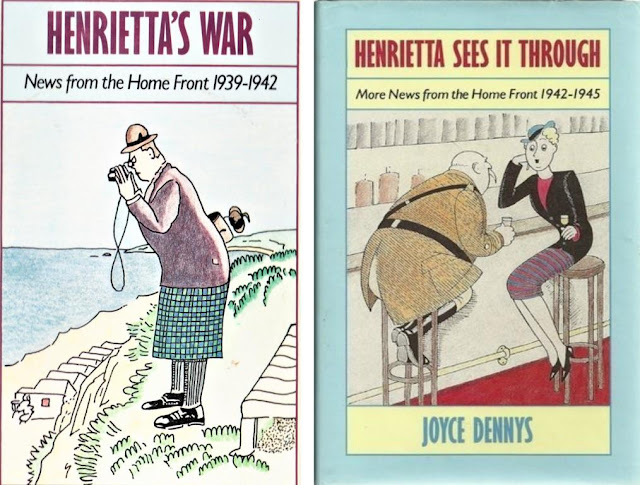Joyce Dennys’ debts

As
part of my research into life during WW2 in Budleigh Salterton I’ve been dipping
into the ‘Henrietta’ series of books. They originally appeared in the form of
letters published in the wartime Sketch magazine, and were intended to be read
as letters from a local GP’s wife to her childhood friend Robert serving
overseas.
'Henrietta’s War' and 'Henrietta Sees It Through' by Joyce
Dennys, were published in book form in the mid-1980s. Some people find her brand
of humour too arch for words, but I enjoyed the author’s humorous description
of conditions in a Devon coastal village in wartime, especially as it’s clearly
Budleigh Salterton – or Salterton – as the place might have been better known
in those days.
Dipping
into other writings by Joyce Dennys I came across her autobiographical 'And Then
There was One', published in 1983.
A World War One VAD recruitment poster designed by Joyce Dennys
Dennys
is perhaps better known as an artist and illustrator, and I was puzzled at the
end of the book by her mention of the ‘splendid teaching from a man called
Burman Morell’. She describes him as ‘another of the people I look forward to
meeting in heaven in order to say “thank you”’.
Left:
Joyce Dennys in her twenties. The old School of Art building in Exeter, now the
Phoenix arts centre
Nowhere
could I find anything about this Exeter Art School teacher until dyslexic-friendly
Google directed me to William Burman-Morrall (1880-1939), whose obituary
appears on the excellent Friends of Higher Cemetery website. Here it is:
William Burman-Morrall came to Exeter in October 1903 from the
Royal College of Art in London. He was second master at the Royal Albert
Memorial School of Art under John Shapland who he succeeded as principal in
1913. One of William’s pupils was John Angel who sculpted the Exeter War
Memorial. Previous to his artistic career William had been interested in
engineering and model making and pursued these interests until he died. Shortly
before his death he had been designing a gas-proof room. William had been ill
for six weeks before his death but tried to continue working until he was too
ill to do so. He died on 27th December 1939. His funeral
service was in St David’s Church followed by interment at the Higher Cemetery.
Some amusing examples of Joyce Dennys' art, in a Budleigh setting
I hope that Joyce Dennys apologised to her old teacher for
misspelling his name, as well as thanking him for inspiring her to be the
talented artist that we know.
The Higher Cemetery, on St Mark’s Avenue, NE Exeter. It was opened on 26 March 1866. Image credit: Derek Harper
You
can read about Exeter’s Higher Cemetery at https://sites.google.com/site/friendsofhighercemetery/home
It
sounds an interesting place to visit.
You can access other posts on this blog by going to the Blog Archive (under the ‘About Me’ section), and clicking on the appropriate heading.








Comments
Post a Comment